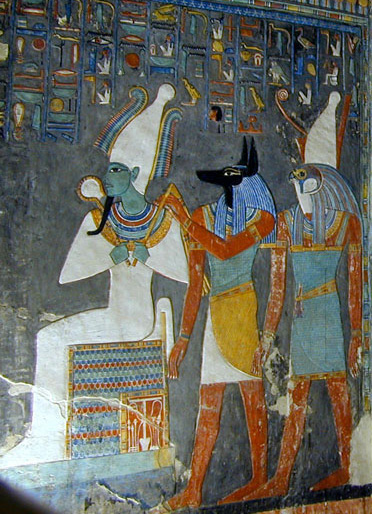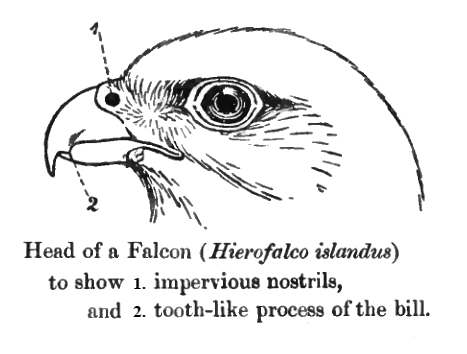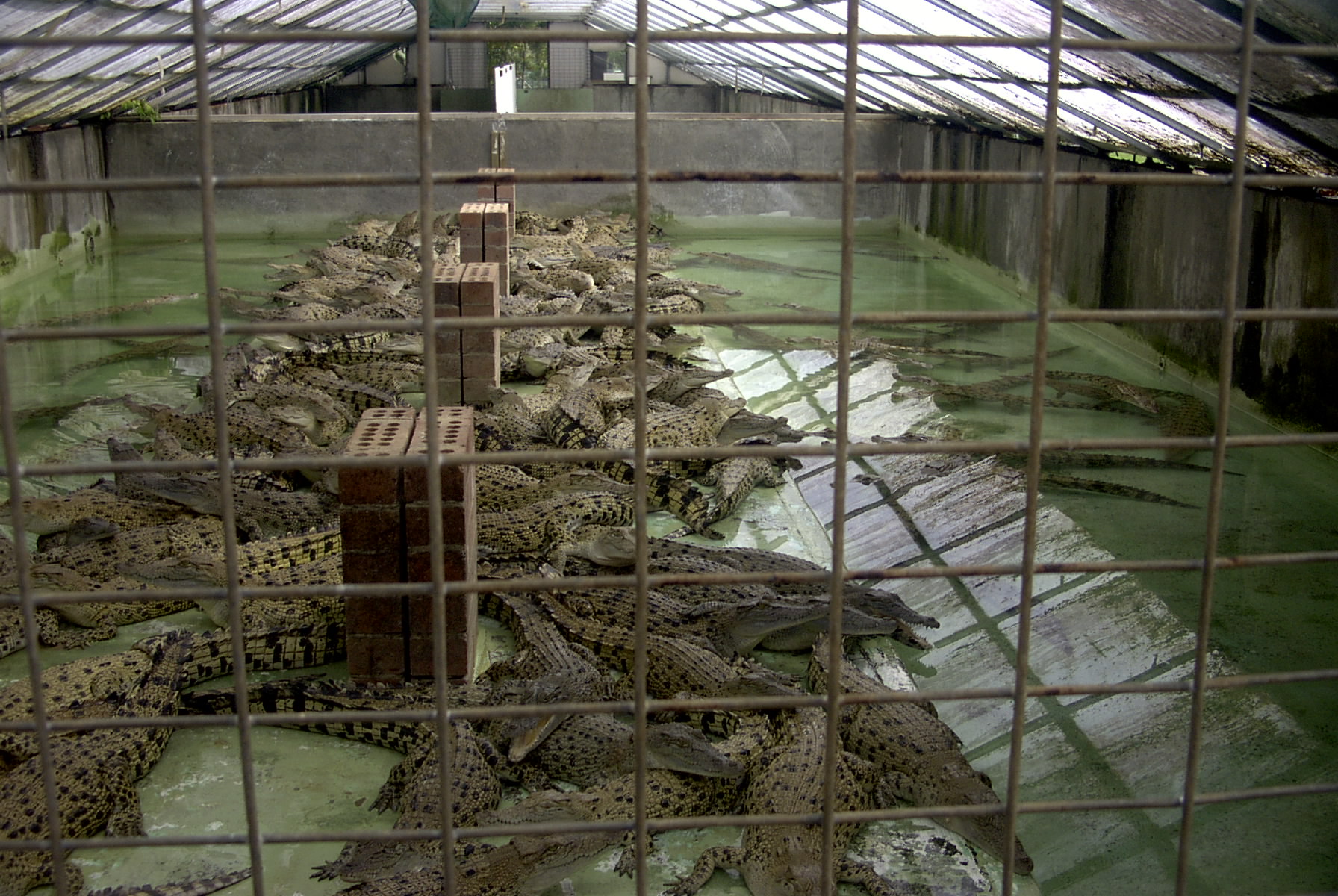|
Khenti-kheti
In Egyptian mythology, Khenti-kheti (also spelt Chenti-cheti), was a crocodile-god, though he was later represented as a falcon-god. His name means "foremost retreater". Origin and evolution At earlier times, he was the crocodile god of the region called Athribis in Lower Egypt. This is why, in Egyptian history, he has often been associated with Sebek and is said to be ''The'' ''Owner of Athribis''. However, during the New Kingdom, he was shown to be related to Horus and was shaped like a hawk. At that time his name was ''Horas Khenti-Kheti.'' Legend He could take the form of a giant black bull, named Kemwer. He was later replaced by Osiris Osiris (, from Egyptian ''wikt:wsjr, wsjr'') was the ancient Egyptian deities, god of fertility, agriculture, the Ancient Egyptian religion#Afterlife, afterlife, the dead, resurrection, life, and vegetation in ancient Egyptian religion. He was ..., also known as "Osiris, who lived in Athribis". References Egyptian gods Falcon d ... [...More Info...] [...Related Items...] OR: [Wikipedia] [Google] [Baidu] |
Animal Gods
Animal worship (also zoolatry or theriolatry) is an umbrella term designating religious or ritual practices involving animals. This includes the worship of animal deities or animal sacrifice. An animal 'cult' is formed when a species is taken to represent a religious figure. Animal cults can be classified according to their formal features or by their symbolic content. Thomas (1911), p. 51 The classical author Diodorus situated the origin of animal worship in a myth in which the gods, threatened by giants, disguised themselves as animals. The people then began to worship these animals and continued even after the gods returned to their normal state. In 1906, Weissenborn suggested that animal worship resulted from humans' fascination with the natural world. Primitive man would observe an animal that had a unique trait and the inexplicability would engender curiosity. Weissenborn (1906b), p. 282 Wonder resulted from primitive man's observations of this distinctive trait ... [...More Info...] [...Related Items...] OR: [Wikipedia] [Google] [Baidu] |
Egyptian Gods
Ancient Egyptian deities are the gods and goddesses worshipped in ancient Egypt. The beliefs and rituals surrounding these gods formed the core of ancient Egyptian religion, which emerged sometime in prehistory. Deities represented natural forces and phenomena, and the Egyptians supported and appeased them through offerings and rituals so that these forces would continue to function according to '' maat'', or divine order. After the founding of the Egyptian state around 3100 BC, the authority to perform these tasks was controlled by the pharaoh, who claimed to be the gods' representative and managed the temples where the rituals were carried out. The gods' complex characteristics were expressed in myths and in intricate relationships between deities: family ties, loose groups and hierarchies, and combinations of separate gods into one. Deities' diverse appearances in art—as animals, humans, objects, and combinations of different forms—also alluded, through symbolism ... [...More Info...] [...Related Items...] OR: [Wikipedia] [Google] [Baidu] |
Athribis
Athribis (; Greek: , from the original , ) was an ancient city in Lower Egypt. It is located in present-day Tell Atrib, just northeast of Benha on the hill of Kom Sidi Yusuf. The town lies around 40 km north of Cairo, on the eastern bank of the Damietta branch of the Nile. It was mainly occupied during the Ptolemaic, Roman, and Byzantine eras. Background Athribis was once the capital of the tenth Lower Egyptian nome. The Palermo Stone indicates Egyptian occupation of the site dating back to the Old Kingdom of Egypt, with the earliest mention of Athribis dating to the reign of Sahure. This could perhaps have been confirmed in 2010 with the discovery of a mastaba dating to the late Third Dynasty to early Fourth Dynasty in nearby Quesna. After this, archeological evidence exists for an occupation during the 12th Dynasty of the Middle Kingdom. Today, many of the preexisting artifacts are lost every year because local farmers like sebakh, fertilizer made from the anci ... [...More Info...] [...Related Items...] OR: [Wikipedia] [Google] [Baidu] |
Egyptian Mythology
Egyptian mythology is the collection of myths from ancient Egypt, which describe the actions of the Egyptian pantheon, Egyptian gods as a means of understanding the world around them. The beliefs that these myths express are an important part of ancient Egyptian religion. Myths appear frequently in Egyptian Ancient Egyptian literature, writings and Art of ancient Egypt, art, particularly in short stories and in religious material such as hymns, ritual texts, Ancient Egyptian funerary texts, funerary texts, and Egyptian temple, temple decoration. These sources rarely contain a complete account of a myth and often describe only brief fragments. Inspired by the cycles of nature, the Egyptians saw time in the present as a series of recurring patterns, whereas the earliest periods of time were linear. Myths are set in these earliest times, and myth sets the pattern for the cycles of the present. Present events repeat the events of myth, and in doing so renew ''maat'', the fundament ... [...More Info...] [...Related Items...] OR: [Wikipedia] [Google] [Baidu] |
Horus
Horus (), also known as Heru, Har, Her, or Hor () in Egyptian language, Ancient Egyptian, is one of the most significant ancient Egyptian deities who served many functions, most notably as the god of kingship, healing, protection, the sun, and the sky. He was worshipped from at least the late prehistoric Egypt until the Ptolemaic Kingdom and Egypt (Roman province), Roman Egypt. Different forms of Horus are recorded in history, and these are treated as distinct gods by Egyptology, Egyptologists."The Oxford Guide: Essential Guide to Egyptian Mythology", Edited by Donald B. Redford, Horus: by Edmund S. Meltzer, pp. 164–168, Berkley, 2003, . These various forms may be different manifestations of the same multi-layered deity in which certain attributes or Syncretism, syncretic relationships are emphasized, not necessarily in opposition but complementary to one another, consistent with how the Ancient Egyptians viewed the multiple facets of reality. He was most often depicted as ... [...More Info...] [...Related Items...] OR: [Wikipedia] [Google] [Baidu] |
Falcon Deities
Falcons () are birds of prey in the genus ''Falco'', which includes about 40 species. Some small species of falcons with long, narrow wings are called hobbies, and some that hover while hunting are called kestrels. Falcons are widely distributed on all continents of the world except Antarctica, though closely related raptors did occur there in the Eocene. Adult falcons have thin, tapered wings, which enable them to fly at high speed and change direction rapidly. Fledgling falcons, in their first year of flying, have longer flight feathers, which make their configuration more like that of a general-purpose bird such as a broadwing. This makes flying easier while still learning the aerial skills required to be effective hunters like the adults. The falcons are the largest genus in the Falconinae subfamily of Falconidae, which also includes two other subfamilies comprising caracaras and a few other species of "falcons". All these birds kill prey with their beaks, using a to ... [...More Info...] [...Related Items...] OR: [Wikipedia] [Google] [Baidu] |
Osiris
Osiris (, from Egyptian ''wikt:wsjr, wsjr'') was the ancient Egyptian deities, god of fertility, agriculture, the Ancient Egyptian religion#Afterlife, afterlife, the dead, resurrection, life, and vegetation in ancient Egyptian religion. He was classically depicted as a green-skinned deity with a Pharaoh, pharaoh's beard, partially mummy-wrapped at the legs, wearing a distinctive atef crown and holding a symbolic crook and flail. He was one of the first to be associated with the mummy wrap. When his brother Set (deity), Set cut him to pieces after killing him, with her sister Nephthys, Osiris' sister-wife, Isis, searched Egypt to find each part of Osiris. She collected all but one – Osiris’s genitalia. She then wrapped his body up, enabling him to return to life. Osiris was widely worshipped until the decline of ancient Egyptian religion during the Christianization of the Roman Empire, rise of Christianity in the Roman Empire. Osiris was at times considered the eldest son of ... [...More Info...] [...Related Items...] OR: [Wikipedia] [Google] [Baidu] |
Mnevis
Mnevis (, ) is the Hellenized name of an ancient Egyptian bull god which had its centre of worship at Heliopolis, and was known to the ancient Egyptians as ''Mer-wer'' or ''Nem-wer''. Although initially a separate god, it was later assimilated to the syncretized god Atum-Ra as his physical manifestation, and also considered as the ba of Ra. Mnevis is often depicted as a black bull wearing a solar disk and uraeus. As reported by Plutarch, the Mnevis bull was second only to the Memphite Apis bull in importance. Similarly to the Apis bull, the Mnevis bull's movements were thought to be driven by divine will, and used as an oracle. The priesthood of Mnevis also went as far as to claim that Mnevis was none other than the father of the more famous Apis. The Mnevis bull was entitled to two concubines, more precisely two cows representing Hathor and Iusaaset. When the bull died, he was embalmed and buried with all honours in a dedicated necropolis which was located not far ... [...More Info...] [...Related Items...] OR: [Wikipedia] [Google] [Baidu] |
Sobek
Sobek (), also known as Suchus (), was an ancient Egyptian deities, ancient Egyptian deity with a complex and elastic history and nature. He is associated with the Nile crocodile and is often represented as a crocodile-headed humanoid, if not as a crocodile outright. Sobek was also associated with pharaonic power, fertility, and military prowess, but served additionally as a protective deity with apotropaic magic, apotropaic qualities, invoked especially for protecting others from the dangers presented by the Nile. History Sobek enjoyed a longstanding presence in the ancient Egyptian pantheon, from the Old Kingdom of Egypt (c. 2686–2181 BCE) through the Roman period (). He is first known from several different Pyramid Texts of the Old Kingdom, particularly from spell PT 317. The spell, which praises the pharaoh as the living incarnation of the Nile crocodile, crocodile god, reads: The origin of his name, ''Sbk''WB IV, 95. in Egyptian language, Egyptian, is debated among scho ... [...More Info...] [...Related Items...] OR: [Wikipedia] [Google] [Baidu] |
New Kingdom Of Egypt
The New Kingdom, also called the Egyptian Empire, refers to ancient Egypt between the 16th century BC and the 11th century BC. This period of History of ancient Egypt, ancient Egyptian history covers the Eighteenth Dynasty of Egypt, Eighteenth, Nineteenth Dynasty of Egypt, Nineteenth, and Twentieth Dynasty of Egypt, Twentieth dynasties. Through radiocarbon dating, the establishment of the New Kingdom has been placed between 1570 and 1544 BC. The New Kingdom followed the Second Intermediate Period of Egypt, Second Intermediate Period and was succeeded by the Third Intermediate Period of Egypt, Third Intermediate Period. It was the most prosperous time for the Egyptians#History, Egyptian people and marked the peak of Egypt's power. In 1845, the concept of a "New Kingdom" as Periodization of ancient Egypt, one of three "golden ages" was coined by German scholar Christian Charles Josias von Bunsen; the original definition would evolve significantly throughout the 19th and 20th ... [...More Info...] [...Related Items...] OR: [Wikipedia] [Google] [Baidu] |
Crocodile
Crocodiles (family (biology), family Crocodylidae) or true crocodiles are large, semiaquatic reptiles that live throughout the tropics in Africa, Asia, the Americas and Australia. The term "crocodile" is sometimes used more loosely to include all extant taxon, extant members of the order (biology), order Crocodilia, which includes the alligators and caimans (both members of the family Alligatoridae), the gharial and false gharial (both members of the family Gavialidae) as well as other extinct Taxon, taxa. Crocodile Measurement, size, Morphology (biology), morphology, behaviour and ecology differ among species. However, they have many similarities in these areas as well. All crocodiles are semiaquatic and tend to congregate in freshwater habitats such as rivers, lakes, wetlands and sometimes in brackish water and Seawater, saltwater. They are carnivorous animals, feeding mostly on vertebrates such as fish, reptiles, birds and mammals, and sometimes on invertebrates such as mol ... [...More Info...] [...Related Items...] OR: [Wikipedia] [Google] [Baidu] |
History Of Egypt
Egypt, one of the world’s oldest civilizations, was unified around 3150 BC by King Narmer. It later came under Persian, Greek, Roman, and Islamic rule before joining the Ottoman Empire in 1517. Controlled by Britain in the late 19th century, it became a republic in 1953. After several political transitions, Abdel Fattah el-Sisi currently leads the country. Predynastic Egypt (pre-3150 BC) There is evidence of petroglyphs along the Nile terraces and in desert oases. In the 10th millennium BC, a culture of hunter-gatherers and fishermen was replaced by a grain-grinding culture. Climate changes and/or overgrazing around 6000 BC began to desiccate the pastoral lands of Egypt, forming the Sahara. Early tribal peoples migrated to the Nile River, where they developed a settled agricultural economy and more centralized society. By about 6000 BC, a Neolithic culture had taken root in the Nile Valley. During the Neolithic era, several predynastic cultures developed independently ... [...More Info...] [...Related Items...] OR: [Wikipedia] [Google] [Baidu] |








